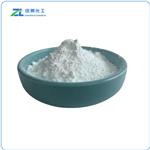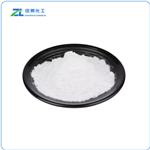colourless or light yellow liquid
ermanent-press fabrics; dimensional stabilization
of rayon and other fibers. Insolubilizing agent
for compounds containing polyhydroxyl groups
(polyvinyl alcohol, starch, and cellulosic materials);
insolubilizing of proteins (casein, gelatin, and
animal glue); embalming fluids; leather tanning;
paper coatings with hydroxyethylcellulose; reducing
agent in dyeing textiles.
Glyoxal is used to prepare 4,5-dihydroxy-2-imidazolidinone by condensation with urea. It finds application in leather tanning process, textile finishes and paper coatings. It is an important building block in the synthesis of imidazoles. It acts as a solubilizer and cross-linking agent in polymer chemistry. Further, it is used as a fixative for histology to preserve cells in order to examine under a microscope.
Glyoxal is used in the production of textilesand glues and in organic synthesis.
ChEBI: Glyoxal is the dialdehyde that is the smallest possible and which consists of ethane having oxo groups on both carbons. It has a role as a pesticide, an agrochemical, an allergen and a plant growth regulator.
Yellow crystals melting at15°C. Hence often encountered as a light yellow liquid with a weak sour odor. Vapor has a green color and burns with a violet flame.
Mixtures with air may explode. Polymerizes quickly on standing, or on contact with a trace of water (possibly a violent reaction), or when dissolved in solvents containing water, [Merck, 502(1968)]. Soluble in water. An aqueous solution contains mono molecular Glyoxal. [Hawley]
Glyoxal reacts vigorously with strong oxidizing agents such as nitric acid. Polymerizes rapidly even at low temperature if anhydrous [Noller]. Aqueous solutions are more stable but also polymerize on standing. Reacts with itself in the presence of base to give glyconates. Undergoes addition and condensation reactions that may be exothermic with amines, amides, aldehydes, and hydroxide-containing materials. Mixing in equal molar portions with any of the following substances in a closed container caused the temperature and pressure to increase: chlorosulfonic acid, oleum, ethyleneimine, nitric acid, sodium hydroxide [NFPA 1991].
Mixture of vapor and air may explode.
Questionable carcinogen.
Glyoxal is a skin and eye irritant; the effectmay be mild to severe. Its vapors are irritatingto the skin and respiratory tract. Anamount of 1.8 mg caused severe irritation inrabbits’ eyes. Glyoxal exhibited low toxicityin test subjects. Ingestion may cause somnolenceand gastrointestinal pain.
LD50 value, oral (guinea pigs): 760 mg/kg.
Inhalation causes some irritation of nose and,40% solution throat. Contact with liquid,40% solution irritates eyes and causes mild irritation of skin; stains skin yellow. (No information available on symptoms of ingestion.)
Behavior in Fire: Heat may cause polymerization to a combustible, viscous material.
Flammability and Explosibility
Not classified
Low toxicity by
SYN: AEROTEX GLYOXAL 40
ingestion and skin contact. A skin irritant. A powerful reducing agent. May explode on
contact with air. Polymerizes violently on
contact with water. During storage it may
spontaneously polymerize and ignite. Reacts
violently with chlorosulfonic acid, ethylene
imine, HNO3, oleum, NaOH, can cause
violent reactions. Can explode during
manufacture. When heated to
decomposition it emits acrid smoke and
irritating fumes. See also ALDEHYDES.
Glyoxal is mixed with a combustible solventand burned in a chemical incineratorequipped with an afterburner and scrubber.



